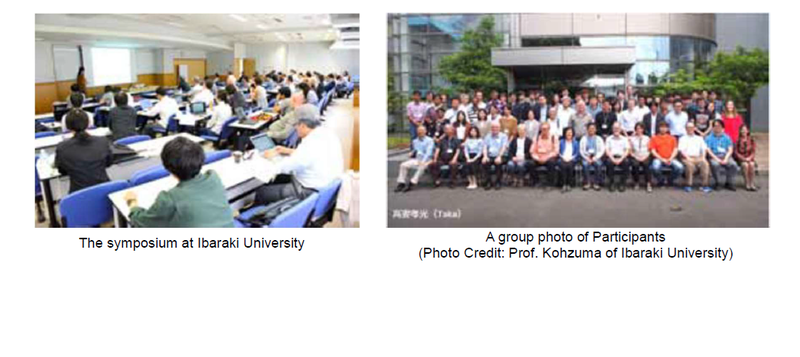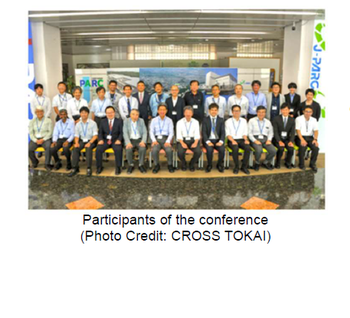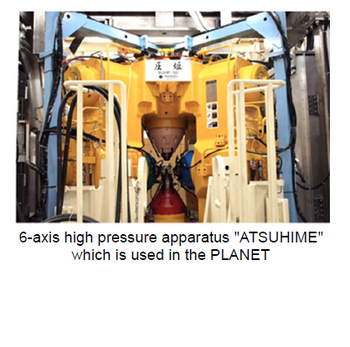J-PARC NEWS June 2018 (Issue #158)
■Safety Day at J-PARC (May 25, J-PARC Research Building; Auditorium, Nuclear Science Research Institute)
To improve safety awareness of staff and ensure that the lessons of the radioactive material leak accident at the Hadron Experimental Facility (May 23, 2013) do not fade with time, a Safety Day is held every year at the J-PARC Center. This year, Safety Day was May 25, and the events included a “Meeting to exchange information on safety” in the morning, and a "5/23 workshop for fostering safety culture" in the afternoon. At the information exchange meeting, there were commendations of good practices, science talks relating to safety, and introductions of safe works conducted at the facility. The workshop welcomed Mr. Haruyasu Hoshino, a manager from the Safety and Health Promotion Division of Toyota Motor Corporation, and he gave a talk entitled "Developing Safety Response and Safety Culture during Automation at Toyota." After screening a video recording relating to the leak accident, Yukihiro Miyamoto, Head of the J-PARC Center's Safety Division spoke on the topic "Reflecting on the Leakage Accident."
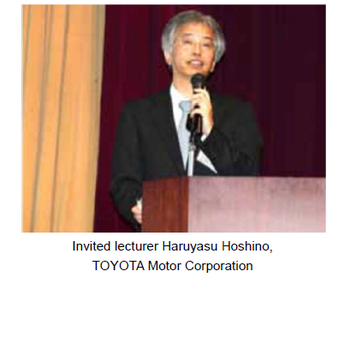 ■Faulty Operation of Electronic Devices Caused by Cosmic Ray Muons — Toward the Development of Soft Error Evaluation Technology for Supporting the Safety and Security of an Ultra-Smart Society — (May 27, Press Release)
■Faulty Operation of Electronic Devices Caused by Cosmic Ray Muons — Toward the Development of Soft Error Evaluation Technology for Supporting the Safety and Security of an Ultra-Smart Society — (May 27, Press Release)
Transient errors called soft errors are one cause of faulty operation and malfunction of electronic devices such as personal computers. One factor underlying such errors is bit information inversion in semiconductor devices, due to the cosmic rays which rain down on the earth and strike electronic devices. A joint research team drawn from Kyushu University, the J-PARC Center and other institutions has used the Muon Science Establishment (MUSE) of the Materials and Life Science Experimental Facility (MLF) to carry out muon irradiation tests on semiconductor devices, and shown experimentally, for the first time, that negative muons have a higher probability than positive muons of causing a bit inversion in memory data. It is expected that these results will be useful for improving the safety of autonomous vehicles, and contribute to progress in semiconductor technology. This research was supported by a Grant-in-Aid for Scientific Research from the Ministry of Education, Culture, Sports, Science and Technology, and was featured in IEEE Transactions on Nuclear Science (electronic version) on May 24, 2018. (Title: Negative and Positive Muon-Induced Single Event Upsets in 65-nm UTBB SOI SRAMs)
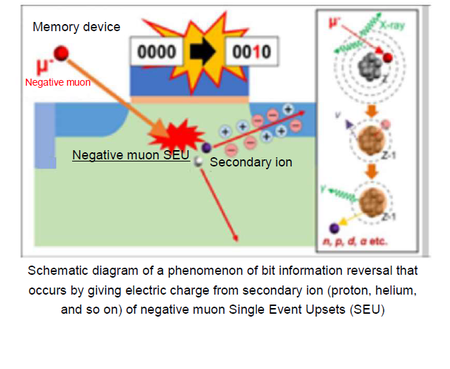 ■Laser Charge Exchange Experiment — Successful Extraction of a Continuous Beam — (March, LINAC) —
■Laser Charge Exchange Experiment — Successful Extraction of a Continuous Beam — (March, LINAC) —
At the Transmutation Experimental Facility (TEF) planned by the J-PARC Center for development of an Accelerator-Driver nuclear transmutation System (ADS), a weak proton beam up to a maximum of 10 W extracted from a 250 kW high-intensity negative hydrogen ion (H-) beam accelerated with LINAC is needed. We have been developing a technology to extract a weak proton beam by stripping off an electron from an H- with a laser, and separating it with a bending magnet. Using a 3-MeV LINAC, a short-pulse proton beam of 10 ns width was successfully extracted last year using a short pulse laser. This year, a continuous proton beam using a continuous laser which simulated ADS operations was successfully extracted. Accordingly, the required beam extraction technology was established through the successful extractions.
■2018 International Symposium of Quantum Beam Science (May 30 to June 2, Mito Campus, Ibaraki University)
Since 2016, Ibaraki University has periodically invited the researchers who drive the world's quantum beam science, and held an International Symposium of Quantum Beam Science. This year was the third symposium, and from May 30 to June 2 there were presentations on research in various fields using quantum beams as a probe, focusing on the main themes of elucidating the phenomena of life at the atomic level, and research/applications of the properties of soft matter. There were about 60 participants, and Dr. Seiko Kawamura from the Neutron Science Section of the J-PARC Center gave a talk on research using µSR* relating to the magnetic ground state and dynamics of the quantum spin system Rb2Cu2Mo3O12.
*µSR stands for "muon spin rotation, relaxation, or resonance." With this technique, the various properties of a material are elucidated by exposing the material to spin polarized muons, and then capturing, in real time, the size and fluctuations of the internal magnetic fields sensed by the muon spin.
■Neutrino 2018 (June 4–9, Heidelberg, Germany)
At Neutrino 2018, held in Heidelberg, Germany on June 4–9, Dr. M. Wascko (Imperial College London, UK) of the T2K Collaboration reported on analysis results including data collected from the end of summer last year to the end of December 2017, future plans for the T2K experiment, and other topics. In the T2K experiment, experimental data using an antineutrino beam has increased by 50%, and Japan leads other countries in analysis results verifying differences in the properties of particles and antiparticles (CP symmetry breaking). Coinciding with the public announcement of experiment results, Dr. Tetsuro Sekiguchi of the Neutrino Section gave an overview at a KEK/J-PARC seminar of the content of the report at Neutrino 2018. In addition, the results of analysis using antineutrino beam data (with the addition of the further 50%) collected up to the end of May this year are scheduled to be reported at an international conference held in the fall of this year.

■KOTO Experiment Collaboration Meeting Held (June 13–15, J-PARC)
International collaborative researchers engaged in the KOTO Experiment at the Hadron Experimental Facility gathered together for a meeting to advance research on rare decay experiments for neutral K mesons. Following on the meeting in December of last year, 37 researchers participated from Japan, the US, South Korea, Taiwan, and other countries. There were reports and lively discussions on topics such as data analysis for the International Conference on High Energy Physics and the J-PARC Program Advisory Committee in July, data collection during beam time that is currently underway, and preparations for strengthening detectors to be carried out this summer.
■Workshop on Advanced Target and Window Materials in High-Intensity Proton Accelerators (May 31, Tokai-mura Industry and Information Plaza "iVil")
On May 31 at iVil, a workshop was held on advanced target and window materials in high-intensity proton accelerator facilities, led by Dr. Shunsuke Makimura of the Muon Science Section, Dr. Taku Ishida of the Neutrino Section and Dr. Eiichi Wakai of MLF of the J-PARC Center. The damage effects due to high-energy proton irradiation on target materials or window materials differ from the irradiation effects due to low-energy neutrons expected at nuclear reactors or fusion facilities. However, there are many common points, and as a workshop organized by the J-PARC Center, this event was attended by people involved in research on irradiation effects for the development of accelerator targets and cutting-edge materials. There were lively discussions by the participants. New plans for cooperative research were examined, and future development is expected.
■21st Superionic Conductor (SIC) Physics Conference (70th Solid State Ionics Conference, June 1–2, IQBRC)
On June 1–2, the 21st Superionic Conductor Physics Conference (70th Solid State Ionics Conference) was held at the Ibaraki Quantum Beam Research Center (IQBRC). In this field, the effectiveness of using neutrons and muons has been long recognized, and a wide range of research is underway. At this conference, there were reports on the latest research results by researchers, and presentations on the latest equipment by persons involved with facilities. Interactions between researchers were deepened through lively discussion. On the day prior to the conference, participants took a well-received tour of J-PARC.
■J-PARC Hello Science Event "Investigating 'Water' in the Deep Earth using Neutrons" (May 25, Tokai-mura Industry and Information Plaza "iVil")
For May's Science Cafe, Dr. Takanori Hattori of the Neutron Science Section gave a talk entitled "Investigating 'Water' in the Deep Earth using Neutrons" on the latest research using neutrons in the area of high-pressure geoscience. Water is plentiful on the earth's surface in the form of seawater, but within the earth there is thought to be a volume of water rivaling or far exceeding that of surface water. Many questions about this type of water are still unanswered, e.g., what state it is in, how large is the accumulation, and how it affects the dynamics of the earth such as plume tectonics. The High Pressure Neutron Diffractometer "PLANET" was developed to investigate these questions, and some recent examples of research were presented.
*Theory for general interpretation of convection in the mantle


